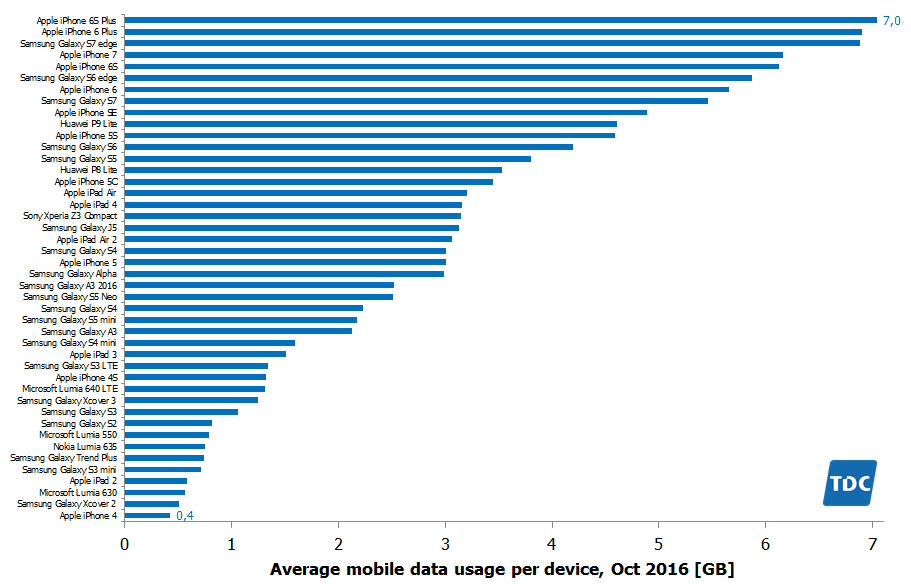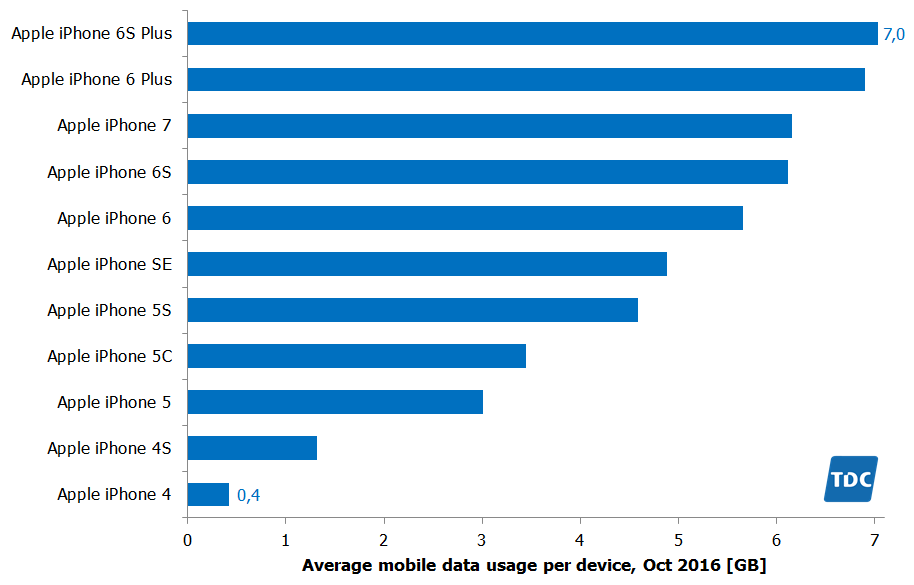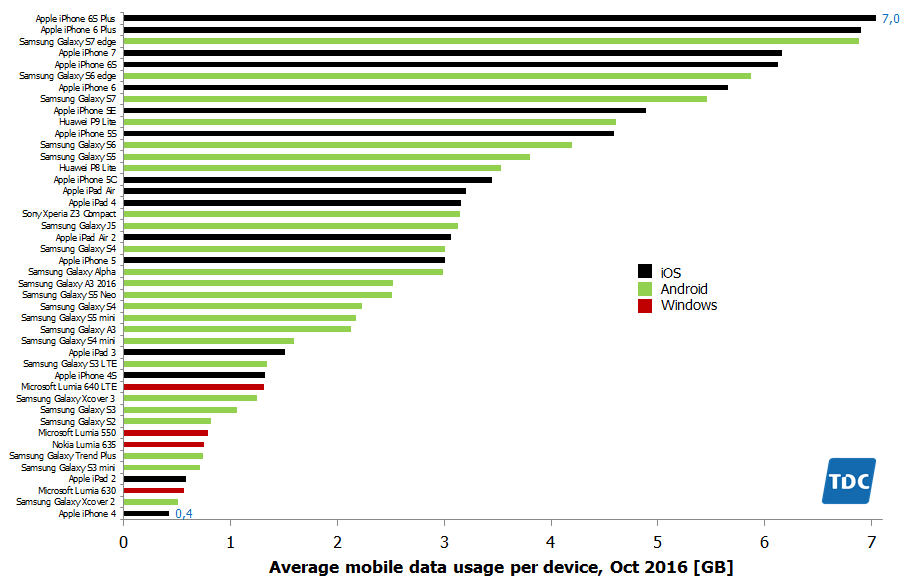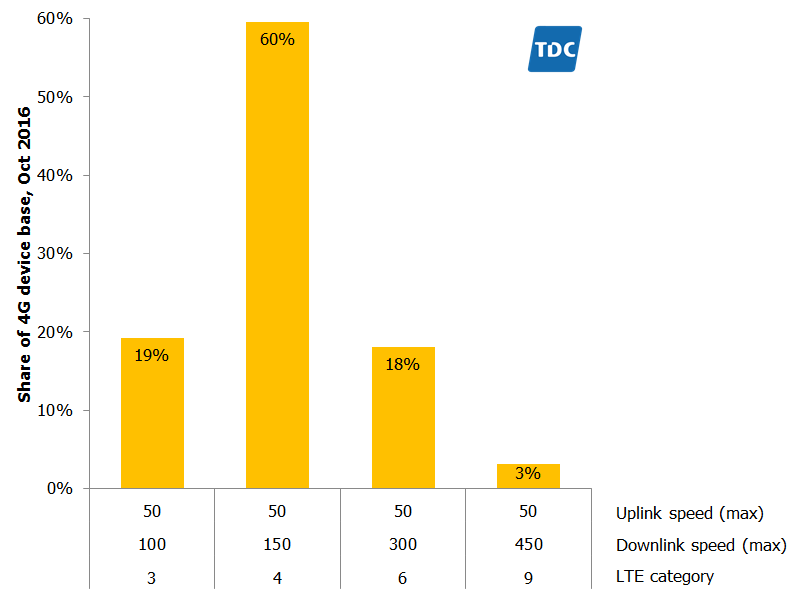TDC, the market-leading operator in Denmark, has provided us with anonymous data showing the average mobile data usage for the most frequently used phones and tablets.
Click to enlarge
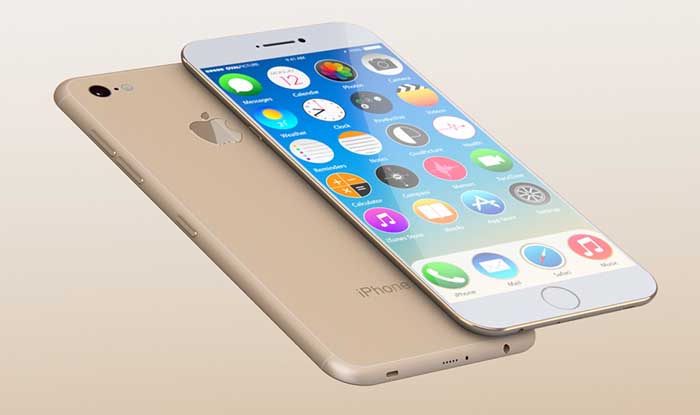 The phone with the highest average mobile data usage on TDC’s network in October was the Apple iPhone 6S Plus with 7 GB.
The phone with the highest average mobile data usage on TDC’s network in October was the Apple iPhone 6S Plus with 7 GB.
The smartphone with the lowest average usage was Apple’s iPhone 4 with 0.4 GB – a 3G phone that was launched in 2010. Comparing only these two points would suggest that users with newer phones consume more mobile data than those with older phones.
But newer phones are generally having larger screens, higher supported throughput with 3G HSDPA and with 4G (and within 4G through the so called LTE Category). In general, newer phones are also having an improved processing performance.
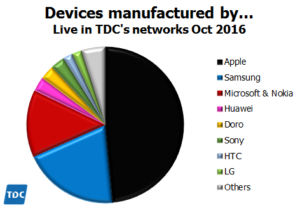 Apple has a very healthy market share in Scandinavia – and among TDC’s customers this is most certainly true: 49% of all devices used on TDC’s network in October were manufactured by Apple. Even though iPads with cellular connectivity explain some of it, forgive us when we simplify the graph from above to only show Apple iPhones:
Apple has a very healthy market share in Scandinavia – and among TDC’s customers this is most certainly true: 49% of all devices used on TDC’s network in October were manufactured by Apple. Even though iPads with cellular connectivity explain some of it, forgive us when we simplify the graph from above to only show Apple iPhones:
It’s interesting to note that the newest Apple smartphone, the iPhone 7, had a lower average data consumption than the two older Plus iPhones. The Plus models have a larger screen than the non-Plus iPhones. Even though there wasn’t yet any iPhone 7 Plus phone in TDC’s network in October, we can conclude that the screen size affects the average data consumption more than the age of the smartphone.
But if we recolour the first graph, we can also see that the operating system seems to impact the average data usage as well:
Devices with Apple’s iOS (black) are generally using more mobile data than Android devices (green) in TDC’s network. In part, this could be explained by Android devices generally having lower prices than Apple devices and that Android device owners perhaps then are on less costly plans with less mobile data allowance. What speaks against it is the the data allowances in Denmark are generous – especially when compared to the price – and that most customers likely seldom use all their data.
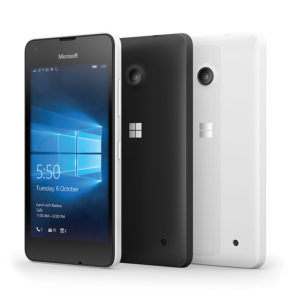 The clearest example of that the operating system influences the data consumption would be the four Microsoft devices (red) in the graph. Although not low-spec’ed, customers with Microsoft devices use less data than almost all iOS and Android devices. The lack of apps might well be an explanation.
The clearest example of that the operating system influences the data consumption would be the four Microsoft devices (red) in the graph. Although not low-spec’ed, customers with Microsoft devices use less data than almost all iOS and Android devices. The lack of apps might well be an explanation.
From November 2015 to October 2016, the data traffic in TDC’s 4G network increased 240% through a combination of increased 4G terminal penetration and generally increase data usage.
It’s highly likely that the traffic will continue to grow since the 4G terminal penetration still can be improved. Another fact which show on a further data usage upside is the distribution of LTE categories in TDC’s 4G base:
Most 4G capable phones – 60% – were Category 4. Although allowing downlink throughput up to 150 Mbit/s, category 6 phones (18% of 4G capable base) can handle twice that downlink throughput and category 9 phones up to 450 Mbit/s – where the network also supports it. Independent crowdsourced network measurements by e.g. OpenSignal as well as independent drivetests by e.g. Omnitele have unanimously shown that TDC has the fastest 4G network in Denmark and thereby generally a good possibility to supply high throughput.
An increasing penetration of higher category 4G phones will likely result in yet higher data usage: A majority of the mobile data usage originates from streaming video and many video services use adaptive bitrates that automatically adjusts the video resolution to the throughput.
 The official Danish statistics showing how the data usage developed in the first half of 2016 are expected in the beginning of December. Preempting this, TDC’s figures suggest that Denmark’s strong growth in mobile data usage continued, but also that there’s an upside for even more growth through an increasing 4G terminal penetration and – within 4G – through a development towards higher throughput capabilities of the phones.
The official Danish statistics showing how the data usage developed in the first half of 2016 are expected in the beginning of December. Preempting this, TDC’s figures suggest that Denmark’s strong growth in mobile data usage continued, but also that there’s an upside for even more growth through an increasing 4G terminal penetration and – within 4G – through a development towards higher throughput capabilities of the phones.

